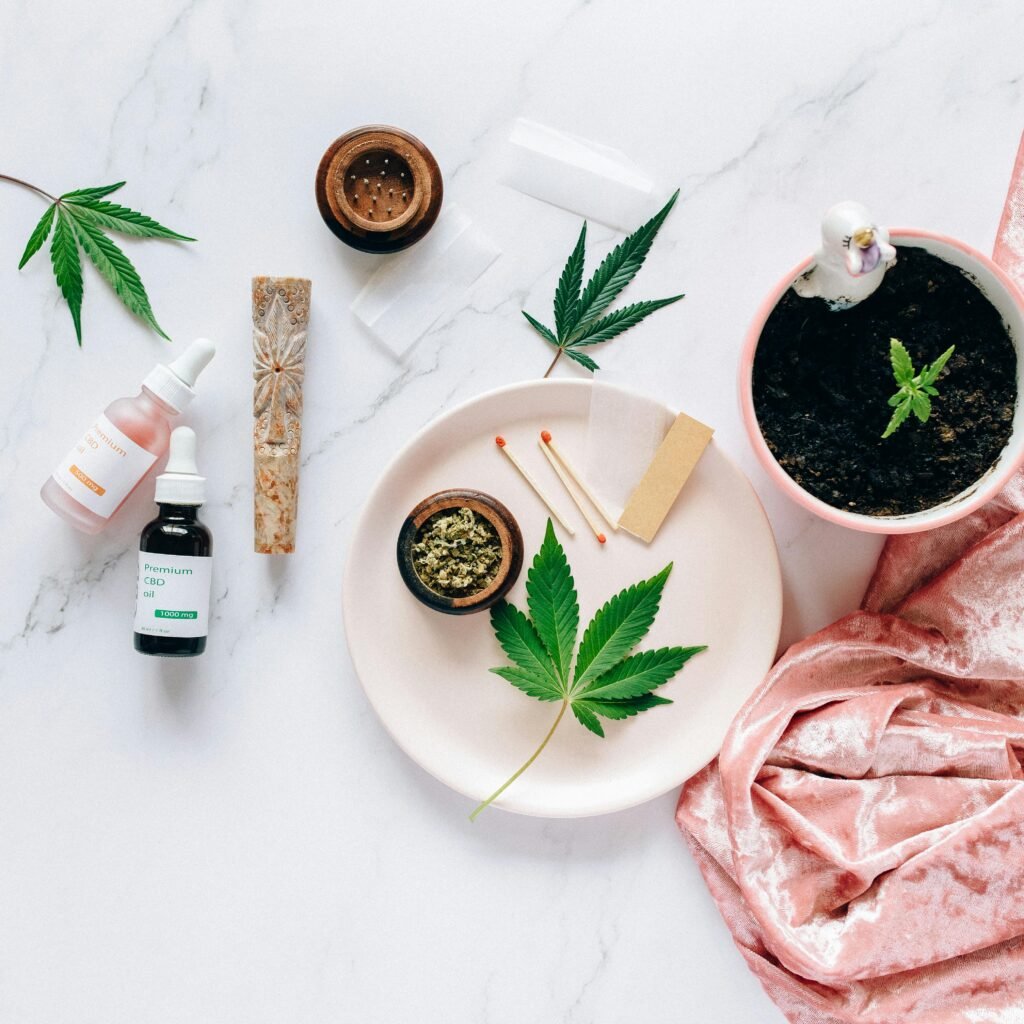
The world of skincare can be pretty intimidating. With many products promising miracle ingredients, the outcome is flawless and radiant. It’s quite overwhelming, and it leaves a lot of confusion in what works and what does not, as well as which products are safe for your skin. Understanding the ingredients within your products is at the core of choosing the right skincare. Each ingredient plays a role, whether fighting acne, reducing signs of aging, or simply hydrating the skin. By learning about these ingredients, you can avoid bad chemicals, tailor your routine to your unique skin type, and get long-term benefits. Whether you are a skincare enthusiast or a beginner, this guide will help you decipher labels, identify key ingredients, and make informed decisions that prioritize your skin’s health.
1. Why Ingredients Matter
Every skincare product has its mixture of active and inactive ingredients each serving different roles for performance. The former serves a purpose on treating particular problems like acne, aging, or dryness. While the latter includes texture, stability, or fragrance, thus the use of active and inactive elements. To avoid harming the skin because of a few potential allergens or irritants by selecting a particular product and type based on individual’s needs or kind of skin.
Get long-term benefits without damaging your skin’s health.
2. What to Search for Skincare Ingredients
Knowing the ingredients that can benefit your skin type or address specific concerns is crucial. Some of the best and science-backed skincare ingredients and the benefits they can provide for your skin include:
a. Hyaluronic Acid
Hyaluronic Acid helps hydrate the skin.
- How It Works: Hyaluronic acid is a potent humectant, drawing moisture into and holding it within the skin. It provides plumping, fills in fine lines and wrinkles, and gives a smoother, more hydrated look.
- Good for: All skin types, especially dehydrated or dry skins.
b. Vitamin C
- What it does: Brightens and protects the skin with antioxidants.
- How It Works: Vitamin C is a potent antioxidant that works to neutralize free radicals, diminish hyperpigmentation, and boost collagen. It’s an essential step for the quest of healthy, evenly-toned skin and anti-environmental damage.
- Best For: Dull, uneven tones and anti-aging/sun damage.
c. Niacinamide
- Purpose: Skin Barrier Strengthening and Oil Control
- How It Works: Also known as vitamin B3, niacinamide regulates sebum production, minimizes the appearance of pores, and improves the skin’s barrier function. It also reduces redness and inflammation, making it a versatile ingredient.
- Ideal For: Oily, acne-prone, or sensitive skin types.
d. Retinol
- Purpose: Anti-Aging and Acne Treatment
- How It Works: Retinol, a derivative of vitamin A, increases cell turnover and collagen production. This makes it very effective for wrinkles, fine lines, and acne, revealing smooth and younger-looking skin after some time.
- Best for: Aging skin and Acne-prone skin; use with caution if sensitive to this product.
e. Salicylic Acid
- Purpose: Exfoliation and Acne Control
- How It Works: This beta-hydroxy acid (BHA) penetrates deep into pores to dissolve excess oil and dead skin cells, preventing and treating breakouts.
- Best For: Oily or acne-prone skin types looking to keep their complexion clear.
f. Ceramides
- Purpose: Skin Barrier Repair
- How It Works: Ceramides are essential lipids that form the skin’s protective barrier and retain moisture. They repair and strengthen compromised skin, making it healthier and more resilient.
- Ideal For: Dry or sensitive skin that needs extra moisture repair.
g. Green Tea Extract
- Purpose: Anti-oxidant and anti-inflammatory
- How it Works: Green tea extract high in polyphenol; protects from environmental stress damage, calms redness, and irritation.
- Ideal For: Sensitive/Redness-prone skins that need calming effects.
3. Ingredients to Avoid
Where the ingredients may heal your skin, others will cause more harm. So be sure to watch out for those potentially damaging ingredients, mainly found in the commercial-based skincare products below:
a. Parabens
Why Avoid: They have been linked to hormone imbalances. Since most scientists are still doing their studies, many try to prevent them.
b. Sulfates
Why Avoid: Commonly found in cleansers and shampoos, sulfates like SLS (sodium lauryl sulfate) can strip the skin’s natural oils, leading to dryness and irritation.
c. Artificial Fragrances and Dyes
Why Avoid: These synthetic additives can trigger allergic reactions, redness, or sensitivities, especially for individuals with reactive skin.
d. Mineral Oil
Why Avoid: While it locks in moisture, mineral oil can clog pores, making it unsuitable for acne-prone skin.
e. Alcohol (Denatured or SD Alcohol)
Why Avoid: Present in some toners and astringents, alcohol can dry out the skin and cause irritation by compromising its barrier function.
f. Phthalates
Why Avoid: Because they are often used for fragrance longevity, phthalates have been linked with possible hormonal imbalances as well as environmental issues.
4. How to Interpret a Skincare Label
Reading ingredient lists can seem like a daunting task. Here are some tips for deciphering them effectively:
- Ingredients Are Listed in Descending Order: The first few ingredients make up the bulk of the product, so focus on these.
- Look for Active Ingredients: These are often highlighted on the front of the packaging or in bold within the ingredient list.
- Research Unknown Names: If you’re unsure about an ingredient, look it up to determine its safety and purpose for your skin.
5. Tailoring Ingredients to Your Skin Type
Each skin type is different, and knowing its needs can help you select the right products. Here’s a quick guide:
a. Dry Skin
- Best Ingredients: Hyaluronic acid, ceramides, shea butter, squalane for intense hydration.
- Avoid: Alcohol-based products that can further dehydrate the skin.
b. Oily Skin
- Best Ingredients: Salicylic acid, niacinamide, and clay-based ingredients like kaolin or bentonite to absorb excess oil.
- Avoid: Heavy oils that may clog pores or exacerbate greasiness.
c. Sensitive Skin
- Best Ingredients: Aloe vera, chamomile, oatmeal, and green tea extract to soothe irritation and calm inflammation.
- Avoid: Fragrances, dyes, and harsh exfoliants that can trigger sensitivities.
d. Combination Skin
- Best Ingredients: Lightweight hydrators like hyaluronic acid and niacinamide to balance oil and moisture.
- Avoid: Overly rich creams that may clog pores in oily areas.
6. The Rise of Clean Beauty
The clean beauty movement simplified finding products that weren’t formulated with bad things, like harmful ingredients, contained within them. With so many brands now creating focus on clean beauty-that emphasize transparency, sustainability and efficacies-look out for labels such as:
- Non-comedogenic to minimize pore clogging potential;
- Vegan-an other plant-based lifestyle way and
- Organic-founded with natural, organically certified ingredients for assured healthy care.
8. Trending Skincare Ingredients
Keep an eye out for these buzzworthy ingredients gaining popularity in the beauty industry:
- Bakuchiol: A plant-derived, gentle alternative to retinol with comparable anti-aging effects.
- Centella Asiatica (Cica): Soothing and healing, ideal for sensitive skin.
- Probiotics: Balance the micro biome of the skin to create a healthy, resilient barrier.
- Peptides: Stimulate collagen production to improve skin firmness and elasticity.
Conclusion:
This allows you to take control of your skincare choices and improve the health and appearance of your skin. You are able to construct a routine that yields lasting results, focusing on quality, targeted ingredients and avoiding potentially damaging additives. After all, knowledge is the best tool you can use when it comes to your skincare.
Take your time, do your research, read labels, and consult with professionals if needed. The right ingredients and products make all the difference.


